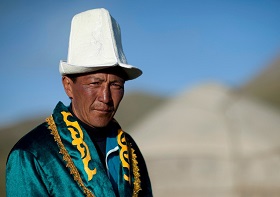As Eurasian integration intensifies, Kyrgyzstan, which has only recently joined the Eurasian Economic Union (EEU) and is now a bridge on the way to the next prospective participant Tajikistan, draws special attention. Numerous disputes on the appropriateness of the chosen path are underway in the Kyrgyz society: all the pros and cons are still being weighed. On the one hand, positive factors include Russian economic support and the opportunities offered to Kyrgyzstan by the Russian policy of import substitution; on the other, the loss of income from re-exporting Chinese goods and a barrage of veterinary checks for Kyrgyz agricultural products on the border with Kazakhstan have an adverse effect on the national economy. The forthcoming parliamentary elections, scheduled for October 4, 2015, as well as the results of the presidential election in 2017, should confirm the policy of integration.
As Eurasian integration intensifies, Kyrgyzstan, which has only recently joined the Eurasian Economic Union (EEU) and is now a bridge on the way to the next prospective participant Tajikistan, draws special attention. Numerous disputes on the appropriateness of the chosen path are underway in the Kyrgyz society: all the pros and cons are still being weighed. On the one hand, positive factors include Russian economic support and the opportunities offered to Kyrgyzstan by the Russian policy of import substitution; on the other, the loss of income from re-exporting Chinese goods and a barrage of veterinary checks for Kyrgyz agricultural products on the border with Kazakhstan have an adverse effect on the national economy. The forthcoming parliamentary elections, scheduled for October 4, 2015, as well as the results of the presidential election in 2017, should confirm the policy of integration.
On October 4, 120 members will be elected to the national unicameral parliament, the Jogorku Kenesh. This election will be the second after the new Constitution was adopted in 2010. The fact that the winning party now forms the government makes the elections particularly significant. The party, which obtains an absolute majority of seats (50 percent), will be able to nominate the prime minister, and will receive a corresponding number of ministerial portfolios. Competing parties must pass a national 5 percent threshold of the total number of registered voters, which enhances the importance of voter turnout.
The presidential Social Democratic Party of Kyrgyzstan (SDPK) appears to have the best chances to win elections. The SDPK has to its credit a long experience in office and friendly relations with Russia, guaranteed aid from the integration investment fund, and the relative stability in society achieved during its mandate. It has essential advantages of incumbency too. Among the 14 parties participating in the elections, other possible winners of parliamentary seats include the Ata-Meken (Fatherland) Socialist Party, the Ar-Namys (Dignity) Party, the united Respublika Party of Kyrgyzstan and Ata-Zhurt (Fatherland) that have already been represented in parliament. It should be noted that none of these five parties, elected to parliament in 2010, enjoyed a significant majority: the party with the biggest representation outnumbered the one with the smallest by ten seats only.
When voting for a particular party, many voters still make their choice in favor of regional candidates, rather than on ideological grounds. The reason is the continued division of Kyrgyz voters into southerners and northerners. To overcome the regional barriers, parties must get at least 0.5 percent of the votes cast in each of the seven regions as well as in the cities of Bishkek and Osh. In 2010, southerners’ Ata-Zhurt party could barely pass this threshold in the north. But now, having united with the northerners’ Respublika Party of Kyrgyzstan, it can become a serious rival of the ruling Social Democratic Party, since the latter may well be called the Northern Democratic Party of Kyrgyzstan. Bir Bol (“Stay United”) party, running the election campaign under the motto “We are different, we are together,” is quite an interesting project. It includes representatives of different regions of Kyrgyzstan, and tries to attract representatives of the Uzbek and Russian communities, which together account for over 20 percent of the country's electorate.
All things considered, the upcoming parliamentary elections do not suggest a sharp change of policy. There is a relative consensus in Kyrgyz society on the issue of foreign policy. The commitment to the Russian orientation was confirmed by the previous leaders of the country, namely Askar Akayev and Kurmanbek Bakiyev (with certain reservations). Since the relations with Russia remain a priority, the course on EEC integration is expected to be confirmed.
However, holding elections in modern Kyrgyzstan is fraught with certain threats. Various political forces, with the support in the regions, may try to destabilize the situation in the republic. The temptation to put associates on buses once again, to bring them to the White House to demonstrate and, with luck, to occupy it, is big enough. After all, success is never blamed. It was the parliamentary elections that started the Tulip revolution of 2005. Later on, the pulsating instability in Kyrgyzstan became cyclical: in 2010 the leadership of the country was again changed by force. Over the past five years there have been no dramatic political developments, and it is not yet clear, due to what Kyrgyzstan could legitimize the transfer of power.
Numerous Kyrgyz parties have little if any apparent ideological differences. It is the old elite that continues to struggle for power. Politicians unscrupulously leave one party for another, the names in the party lists are entered for money, and criminals dominate among the candidates. This results, on the one hand, in the political apathy of the population and the latter’s doubt about possible changes for the better, and on the other, the voters’ traditional support of regional candidates.





